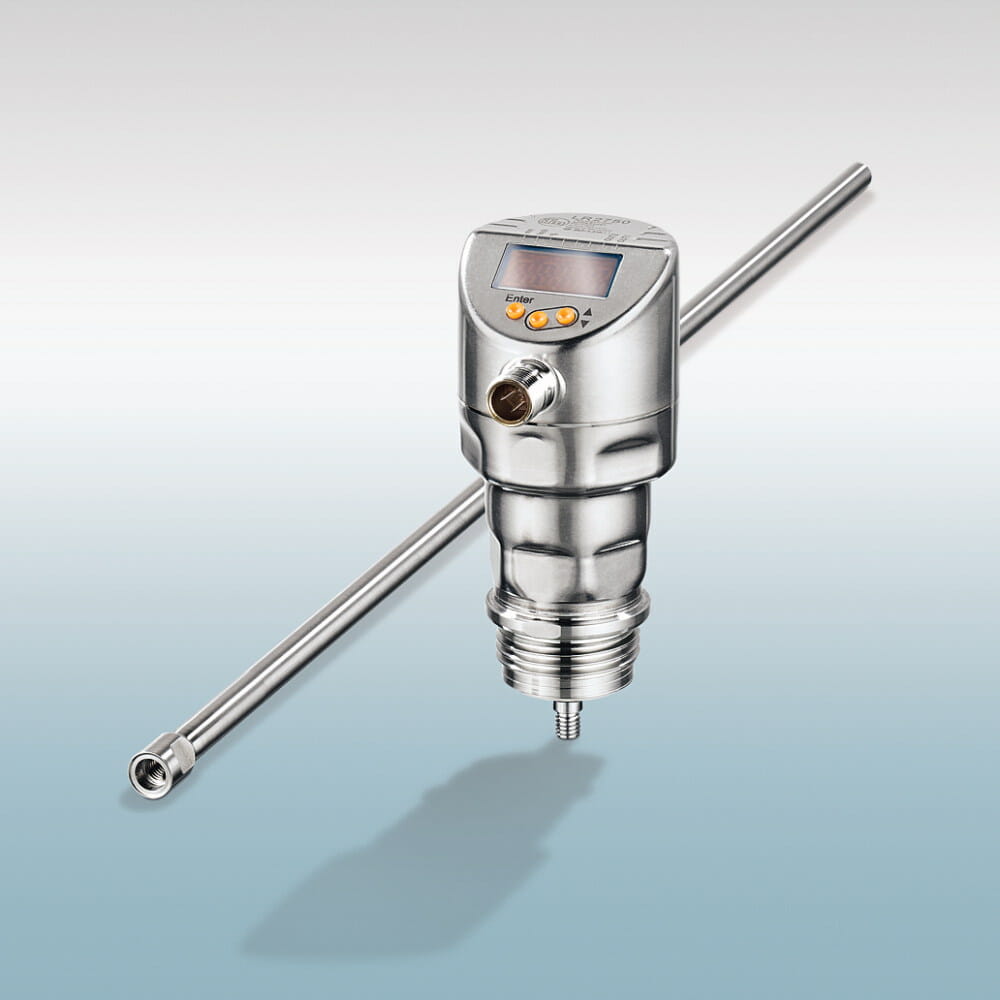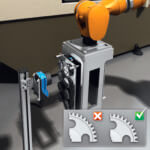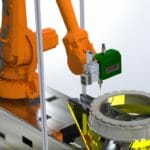There is no shortage of level control technologies in the process control market, for either simple point level or continuous measurement of the level, and perhaps one of the favourites that can do both is GWR, or guided-wave radar. In a nutshell, this is where low-energy microwave (it isn’t going to cook your dinner) signals are generated in the head unit to be transmitted along an attached antenna until they reach a surface that will reflect then back to the head unit. The benefits of such a system lie in several factors. Firstly, few substances absorb the signal, guaranteeing detection. Secondly, the waves will pass around any deposits that might adhere to the antenna, so they do not disrupt the true measurement. In addition, the antenna itself (also known as a probe, or simply a rod) is a passive component, allowing the user to cut it to the right length for the vessel. The GWR system can also ignore foam on the medium.
As a major manufacturer of sensors for process control, ifm electronic has been supplying GWR sensors for a number of years. Here we look at some of the features of this series and recent developments.
The LR series (L for level, R for radar) all consist of a modular system with evaluation unit and probe. The evaluation unit offers an intuitive pushbutton setting interface and a clearly visible 4-digit LED display. Setting the LR is simple, and can even be done before installation.
Sensor parameters are accessible using the pushbuttons on the device, or remotely over IO-Link, and the LR even includes a simulation function to facilitate testing.
The evaluation unit provides different output combinations depending on the model: standard output functions available are two programmable switched outputs, or one switched output and one scalable analogue (4…20 mA). Alternatively, IO-Link can transmit the true value.
The newer versions of the LR range from ifm feature enhanced capabilities, compared to earlier models, and are constructed in deep-drawn stainless steel housings for robustness. The LR2050, for example, is clearly designed for hard work. It is suitable for medium temperature up to 100 °C and can fit into confined spaces. will detect all manner of substances, and a coaxial pipe is available for the LR2050 to improve detection of oils and to help eliminate false readings caused by foam.
Over a dozen probes of different lengths, between 15 cm and 160 cm, can be attached to the LR2050, which will automatically adjust to these different rods. The user can even shorten the probes if required. The process connection is via a G3/4” thread
Another example is the LR2750. Outwardly similar to the LR2050 but designed for hygienic application, the LR2750 naturally has a food-grade process fitting deigned to work with a common standard fittings. The LR2750 can also withstand a higher vessel pressures and medium temperature of up to 150 °C, and work with probes up to 200mm in length. Like all LR’s, the LR2750 has a high IP rating.
The most recent version of ifm electronic’s LR sensor is the LR9020 model. One of the most important features of the LR9020 is the lack of any buttons or displays. This rules out any unauthorised access to the settings. Nevertheless, what this new level sensor does have, like all of them, is an IO-Link interface for remote control.
For the reliable level control in tanks and containers for water-based media, oils and coolants there is nothing better than the LR range from ifm electronic.
ifm is committed to working closely with its customers to develop products which precisely match their needs, and the company provides expert, readily accessible technical support to help users maximise the benefits they gain from ifm products.
For further information, contact Gemma Anderson. Telephone: 0208 213 2234 E-mail [email protected].





